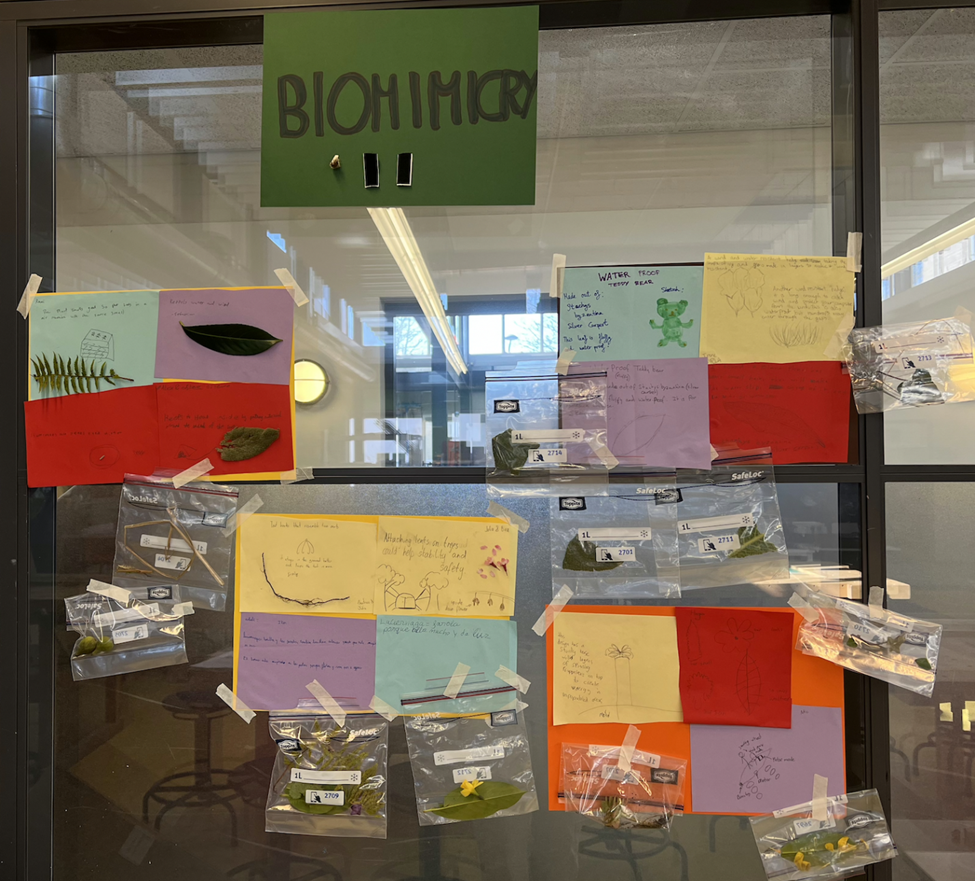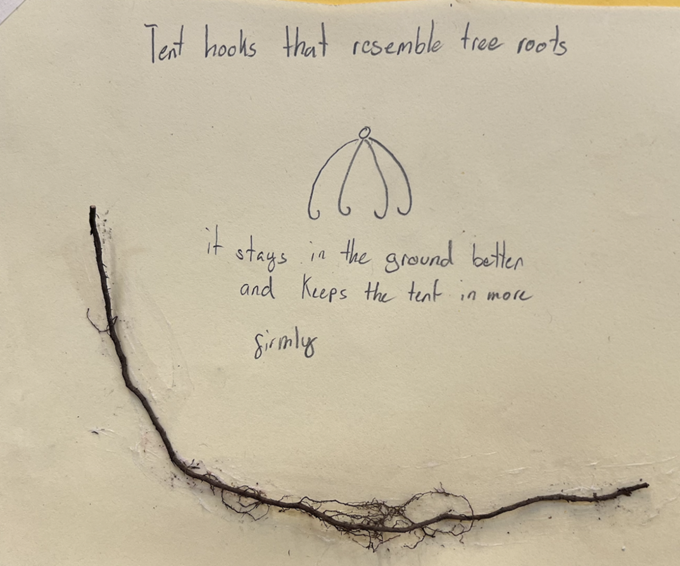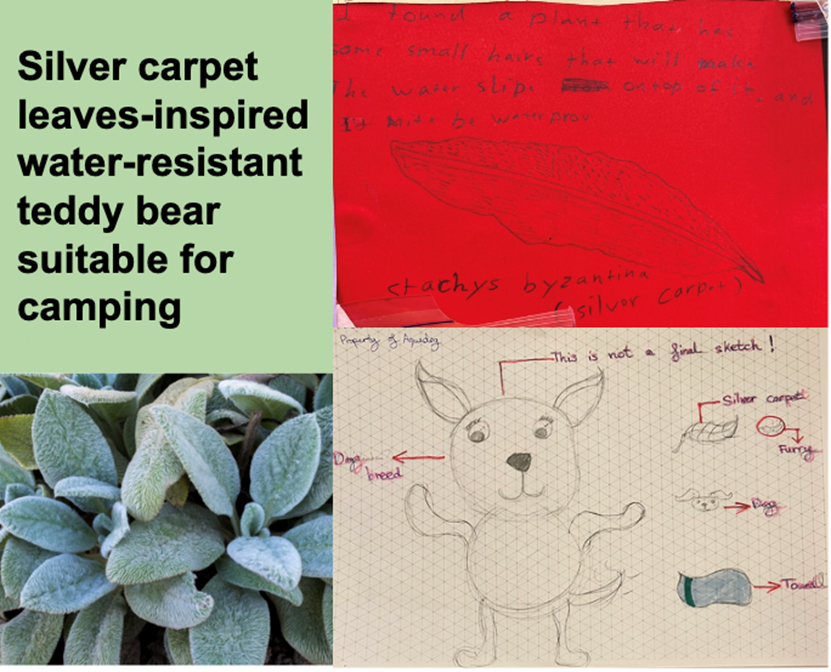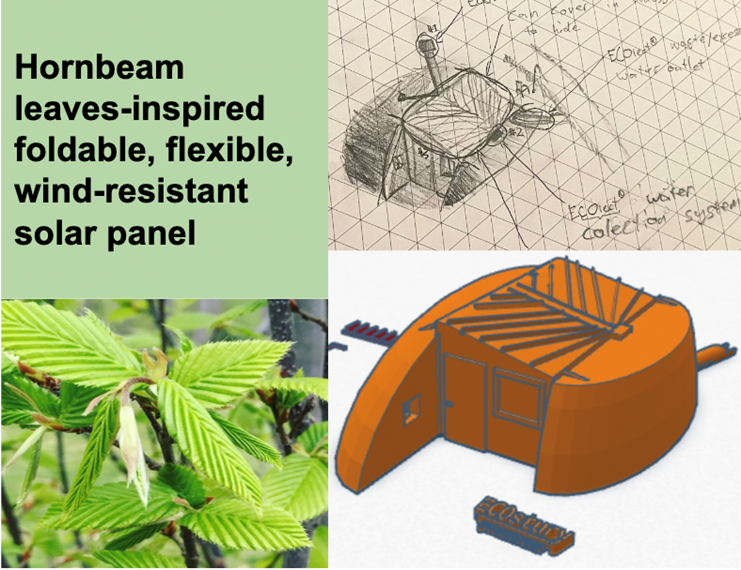Use Spatial Thinking to Solve Biomimicry Design Challenge - Caiwei Zhu (PhD candidate)
Biomimicry means using knowledge from nature to inspire human designs. In a five week design challenge at the International School Delft (ISD) students in group 7 made their own nature-inspired, biomimicry design during a biomimicry project and developed their creative as well as spatial thinking. The biomimicry design module was created through the close collaboration between the Science Hub at TU Delft and a teacher from the ISD.
Just before the summer holidays, 16 students worked in pairs on
the design challenge: “Using knowledge from nature, how can we help camping
lovers to make their camping gears wind- or water-resistant?” After being
introduced to the idea of biomimicry and an outdoor exploration by the canal,
the students came back with specimens collected from nature and brainstormed
their initial design ideas that can be used at a camping site.
 Figure 1. An exhibition of specimens from nature and design idea sketches after the first session
Figure 1. An exhibition of specimens from nature and design idea sketches after the first sessionOne pair of students studied the roots of a plant and made a connection between the shape and the function of roots and that of the tent hooks. Just like the roots help stabilize the plant, they thought the tent hooks will also help stabilize the tent in strong wind. They analogically mapped the form-function relation of roots onto that of tent hooks and visualized their idea through sketching.

Figure 2. Quick brainstorm after outdoor exploration
Another pair of students were inspired by a plant that has the nickname of “silver carpet.” Through close observation and interaction with the plant, they discovered that the small hairs on this plant’s surface not only make the plant feel soft and fluffy in touch, but also make it difficult for rain drops to stay on its surface, serving a water-resistant function. They made the connection between the characteristics of the silver carpet and that of a teddy bear. Their final design, after iterations, was a silver-carpet-inspired, water-resistant teddy bear that feels soft, does not get wet easily, and can give companionship to children who are camping away from home.

Figure 3. Iterating on design ideas
After
closely observing and analyzing different forms and structures that reveal the
wisdom of nature, making design plans, and using sketches to represent and
iterate on their ideas, the students were also challenged to visualize their
designs on TinkerCAD. This pair of students learned that the foldings on
hornbeam leaves help it mitigate wind damage. They reasoned that just as leaves
undergo photosynthesis, solar panels also convert light energy to usable
energy. Therefore, they decided to design solar panels with foldings that will
help the panels become resistant in strong wind, while also being foldable and
compact. On TinkerCAD, they performed a series of actions such as combining
shapes, resizing, and rotating to represent their designs in three dimension.

Figure 4. Making 3D prototypes on TinkerCAD
Overall, in the biomimicry design project, students explored various forms and structures in nature and drew functional inferences from forms to develop creative ideas. They frequently applied spatial thinking when closely observing organisms in nature, using mental imagery to brainstorm ideas, visualizing ideas through sketching, and making 3D prototypes on TinkerCAD.
This design-based project was developed by Caiwei Zhu, a PhD student at Delft University of Technology and Dr. Miroslava Silva Ordaz, PYP 7 & Design teacher at International School Delft and liaison with TU Delft. This project is also part of SellSTEM (https://sellstem.eu/), an EU-funded initiative to develop students’ spatial thinking. Spatial thinking is an important skill and can be developed at an early age through a variety of activities. The focus of the research at the TU Delft is on developing spatial skills through designing and making. Caiwei Zhu’s paper on this biomimicry design projects is available on ResearchGate (https://www.researchgate.net/publication/361516440_Scaffolding_Pupils'_Spatial_Thinking_through_Desi...)
We aim to make the design modules available for more primary schools in the Netherlands and elsewehere. For more information or collaboration, please send an email to c.zhu-1@tudelft.nl.